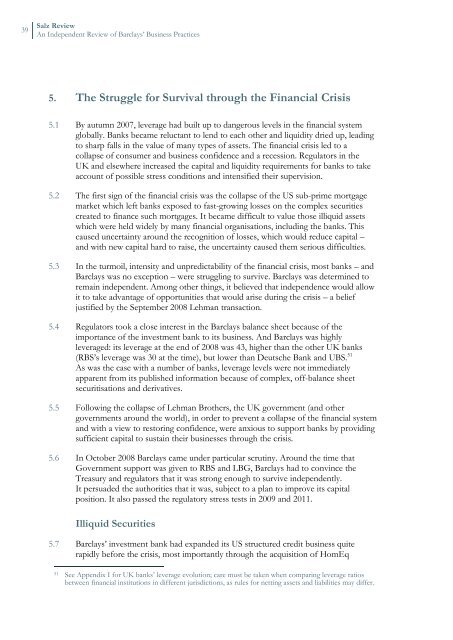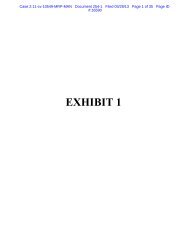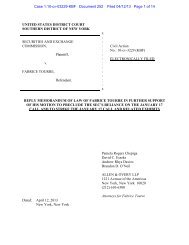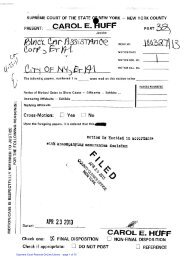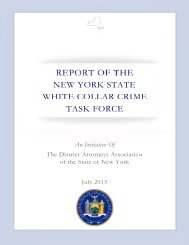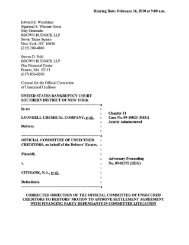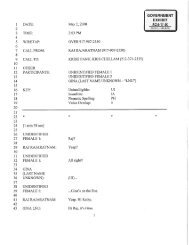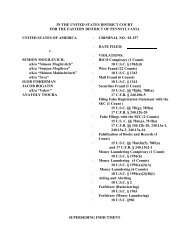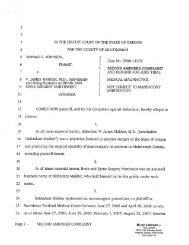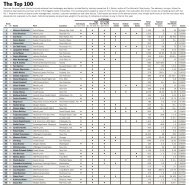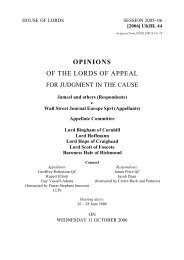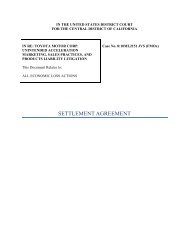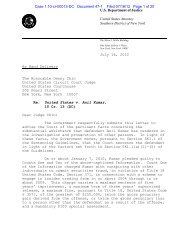Salz Review - Wall Street Journal
Salz Review - Wall Street Journal
Salz Review - Wall Street Journal
You also want an ePaper? Increase the reach of your titles
YUMPU automatically turns print PDFs into web optimized ePapers that Google loves.
39<br />
<strong>Salz</strong> <strong>Review</strong><br />
An Independent <strong>Review</strong> of Barclays’ Business Practices<br />
5. The Struggle for Survival through the Financial Crisis<br />
5.1 By autumn 2007, leverage had built up to dangerous levels in the financial system<br />
globally. Banks became reluctant to lend to each other and liquidity dried up, leading<br />
to sharp falls in the value of many types of assets. The financial crisis led to a<br />
collapse of consumer and business confidence and a recession. Regulators in the<br />
UK and elsewhere increased the capital and liquidity requirements for banks to take<br />
account of possible stress conditions and intensified their supervision.<br />
5.2 The first sign of the financial crisis was the collapse of the US sub-prime mortgage<br />
market which left banks exposed to fast-growing losses on the complex securities<br />
created to finance such mortgages. It became difficult to value those illiquid assets<br />
which were held widely by many financial organisations, including the banks. This<br />
caused uncertainty around the recognition of losses, which would reduce capital –<br />
and with new capital hard to raise, the uncertainty caused them serious difficulties.<br />
5.3 In the turmoil, intensity and unpredictability of the financial crisis, most banks – and<br />
Barclays was no exception – were struggling to survive. Barclays was determined to<br />
remain independent. Among other things, it believed that independence would allow<br />
it to take advantage of opportunities that would arise during the crisis – a belief<br />
justified by the September 2008 Lehman transaction.<br />
5.4 Regulators took a close interest in the Barclays balance sheet because of the<br />
importance of the investment bank to its business. And Barclays was highly<br />
leveraged: its leverage at the end of 2008 was 43, higher than the other UK banks<br />
(RBS’s leverage was 30 at the time), but lower than Deutsche Bank and UBS. 51<br />
As was the case with a number of banks, leverage levels were not immediately<br />
apparent from its published information because of complex, off-balance sheet<br />
securitisations and derivatives.<br />
5.5 Following the collapse of Lehman Brothers, the UK government (and other<br />
governments around the world), in order to prevent a collapse of the financial system<br />
and with a view to restoring confidence, were anxious to support banks by providing<br />
sufficient capital to sustain their businesses through the crisis.<br />
5.6 In October 2008 Barclays came under particular scrutiny. Around the time that<br />
Government support was given to RBS and LBG, Barclays had to convince the<br />
Treasury and regulators that it was strong enough to survive independently.<br />
It persuaded the authorities that it was, subject to a plan to improve its capital<br />
position. It also passed the regulatory stress tests in 2009 and 2011.<br />
Illiquid Securities<br />
5.7 Barclays’ investment bank had expanded its US structured credit business quite<br />
rapidly before the crisis, most importantly through the acquisition of HomEq<br />
51 See Appendix I for UK banks’ leverage evolution; care must be taken when comparing leverage ratios<br />
between financial institutions in different jurisdictions, as rules for netting assets and liabilities may differ.


